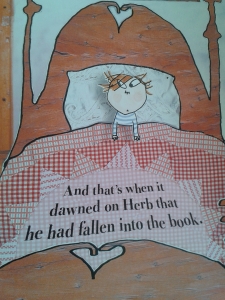The Moaning of Life
By Karl Pilkington
Karl Pilkington is a simple guy with some interesting thoughts and quotes. Whether you are watching him being berated by Ricky Gervais or reading one of his 6 books, you will be struck by his complex straightforwardness. I find him fascinating while his intelligence, stupidity and insightfulness flummoxes me. The main reason is because he is a successful writer and producer. Not that I want to be mean, on the contrary, but after watching and reading Karl’s thoughts I wonder how he ended up where he is now.
He’s not interested in travel and likes to live modestly, so why has he travelled around the globe and put himself in the arena for potential fame and ridicule? Was it the force known as Ricky who shoved Karl on a plane and gave him terrible tasks to do just to be annoying or did Karl deep down want to see some of the world. Maybe Karl just though it would be a good little earner? Whatever it was he’s grabbed this bull by the horns and continued travelling and writing books including The Moaning of Life.
Written plainly with a northern twang The Moaning of Life is set out into sections with a witty introduction clearly stating his lack of interest in fuss and surprises and allowing us a little insight into his confusions at traditions like marriage and having children. Simply named the headings are: Marriage, Kids, Vocation and Money, Happiness and Death. We follow Karl as he travels the world partaking in these everyday occurrences in life.
Marriage sees Karl exploring the concepts of matchmaking and marriage. He works as a wedding planner for an Indian family and observes a couple who marry in Vegas in a laundrette. They exchange dirty clothes and wash them, therefore beginning the marriage on a clean slate while accepting that there may be less pleasant times or habits which one has to accept. During his involvement in wedding ceremonies and meeting the people involved Karl offers his point of view.
I find it odd that we’ve named it the ‘ring finger’. It just goes to show that we have too many fingers. I reckon we’d get by okay if we had lobster hands.’ P12
A typical Karl comment.
Kids begins with an excellent explanation as to why he doesn’t want offspring – it’s actually quite sweet really. Karl is in a hotel and there is a knock at the door, he’s nervous about letting the person in as he is hiding something in his room. He answers the door and he’s relieved it’s just the director and not the hotel staff. Karl says he’s knackered as he hasn’t slept then he shows the director the problem: a turtle in the bath.
Karl has rescued a turtle from a street market in Tokyo. Unfortunately, in a Karl-like manner, he hasn’t thought it through. He has decided to keep it in the bath, but was so concerned the turtle would strangle itself with the plug chain Karl stayed awake to make sure it was safe. He sees this as proof that he shouldn’t have children. He thinks if he’s worrying about a turtle that much then what would he be like with a child? He’s got a point. Like he says:
‘Having kids is the biggest decision you have to make in life, cos once you’ve had one, you can’t send it back.’ P86
Karl opens the Vocation and Money section by saying:
‘I left school with no qualifications worth speaking of, and the only work experience I’d had was playing a shepherd in the Christmas nativity play,’ p147
I find this inspiring. I bet he’d never think he’s an inspirational guy, but I like that he is who he is; he hasn’t come from a position of privilege yet he has a successful career. From a shepherd to producer and writer. I wonder if he sees it that way?
Happiness is a strange (or should I say stranger) section. Karl meets people who hang themselves, by their skin, from hooks; people who get happy by exercising and others seeking happiness though dancing. Now, here is one activity Karl always seems to enjoy. For someone who doesn’t like a fuss made of them because it’s embarrassing he clearly has music in his veins because if there’s an opportunity to dance he doesn’t need asking twice and without a moan he’s up and moving. During this chapter Karl even gets into the swing of cosmetic surgery.
The book ends (obviously and aptly) with Death where Karl experiences funerals, mourning and the dead. On such a dark subject Karl manages to lighten the mood. On moving a body he says:
‘It’s hard to describe the chaos, but just imagine the Chuckle Brothers trying to shift a mattress.’ P312
His description provides us with an all too clear image. He isn’t disrespectful, even though it may sound like it. He admits he has limited emotions and through the book you do get a detached sense of Karl amongst the world. This is probably why his insights and comments can be taken without too much upset because he always seems a little removed to mean any harm plus his honest thoughts and simplicity of style allows him to slide under the radar of reprimands because telling him off would be like scolding a Labrador.
This brief look into the book and unusual mind of Karl Pilkington will hopefully make you want to read some of his writing. It’s an entertaining, funny, light read and for those who have never heard of him you will be shaking your head as you delve into the Pilkington mind. Perfect for this festive period when some escapism is required.





